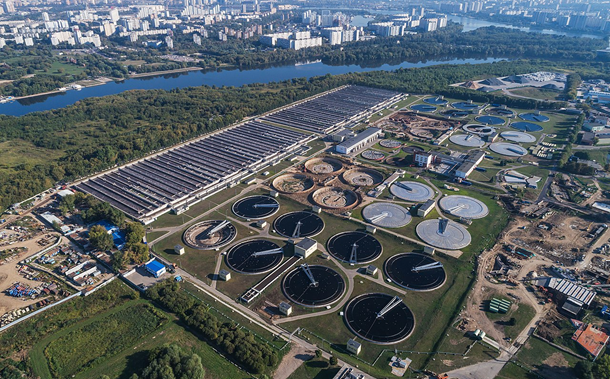Efficacy of Plastic Waste Strips Towards Enhancement of Shear Capacity of Reinforced Concrete Beams
Downloads
The amount of plastic waste produced worldwide has been steadily rising. Manufacturing processes, service industries, and municipal solid waste produce a significant amount of waste plastic. One common construction and industrial waste that could be employed as shear reinforcement in concrete beams for specified purposes is the plastic waste strips, since they have relatively high tensile strength. Such plastic strips are used to tie clay bricks, floor finishing tiles, walkway finishing blocks, curbstones, and so on in different industrial products. This study examines an approach that uses plastic waste strips in place of conventional stirrups to enhance the shear performance of reinforced concrete (RC) beams. A set of shear tests was performed on carefully constructed 150 mm width × 225 mm depth × 1400 mm length beam specimens to evaluate failure mechanisms, modes of failure, crack patterns, and shear strength. All beams have the same flexural requirements, so they were ensured to fail by exceeding their shear strength under the applied load. This study examined five concrete beams that were reinforced internally using plastic waste strips in the shear region, as well as one control beam. The tested beams were reinforced using various strip spacings and configurations. The results of the tests indicated that increasing the plastic waste strips improved the concrete section shear strength. As the number of plastic strips in the section increases, the distance between each strip is drastically reduced, increasing the shear capacity of the beam. The experimental results indicate that the beam with six vertical plastic waste strips in its section has a 75% higher shear strength capacity than the reference beam without any transverse reinforcement. In addition, shear resistance is higher in the beam with plastic strips at 45° and 135° inclined angles than in the beam with vertical plastic strips in the same amount of plastic strips. Based on these findings, reinforced concrete beams can be utilized for specific purposes by employing plastic waste strips as transverse reinforcement to resist internal shear forces.
Downloads
[1] Mehta, P. K. (2002). Greening of the Concrete Industry for Sustainable Development. Concrete International, 24(7), 23–28.
[2] Rahmani, E., Dehestani, M., Beygi, M. H. A., Allahyari, H., & Nikbin, I. M. (2013). On the mechanical properties of concrete containing waste PET particles. Construction and Building Materials, 47, 1302–1308. doi:10.1016/j.conbuildmat.2013.06.041.
[3] Ali, S. I., Ahmed, A. M., Ibrahim, A. E., & Ali, M. I. (2024). Effect of Utilization Waste Strapping Plastic Belts on Flexural Behaviour of Concrete. Annales de Chimie: Science Des Materiaux, 48(1), 95–100. doi:10.18280/acsm.480111.
[4] Abdulridha, S. Q., Nasr, M. S., Al-Abbas, B. H., & Hasan, Z. A. (2022). Mechanical and structural properties of waste rope fibers-based concrete: An experimental study. Case Studies in Construction Materials, 16. doi:10.1016/j.cscm.2022.e00964.
[5] Khalid Ali, O., Ismail Al-Hadithi, A., & Tareq Noaman, A. (2022). Flexural performance of layered PET fiber reinforced concrete beams. Structures, 35, 55–67. doi:10.1016/j.istruc.2021.11.007.
[6] Abbas AL-Khafaji, A. G., Muhammed, S. H., Jadooe, A., & Abdulredha, M. (2024). Effect of strengthening by carbon fiber reinforced polymer sheets on the flexural behavior of reinforced self-compacting concrete beams under repeated loads. Advances in Structural Engineering, 27(5), 854–870. doi:10.1177/13694332241237587.
[7] Jadooe, A. A. S. (2019). Performance of fire-damaged concrete beams strengthened with NSM laminates embedded in cement-based and epoxy adhesives. Ph.D. Thesis, Swinburne University of Technology, Melbourne, Australia.
[8] Jadooe, A., Al-Mahaidi, R., & Abdouka, K. (2017). Experimental and numerical study of strengthening of heat-damaged RC beams using NSM CFRP strips. Construction and Building Materials, 154, 899–913. doi:10.1016/j.conbuildmat.2017.07.202.
[9] Sharaky, I. A., Torres, L., & Sallam, H. E. M. (2015). Experimental and analytical investigation into the flexural performance of RC beams with partially and fully bonded NSM FRP bars/strips. Composite Structures, 122, 113–126. doi:10.1016/j.compstruct.2014.11.057.
[10] Jadooe, A., Al-Mahaidi, R., & Abdouka, K. (2018). Performance of Fire-deteriorated Concrete Beams Strengthened with NSM Laminates. IOP Conference Series: Materials Science and Engineering, 433(1), 12003. doi:10.1088/1757-899X/433/1/012003.
[11] Al-Mamoori, A. H., Al-Khafaji, A. G., & Al-Yaseri, A. M. (2018). Experimental study on the behaviours of spliced reinforced concrete girders strengthened with NSM CFRP bars. IOP Conference Series: Materials Science and Engineering, 433(1), 12023. doi:10.1088/1757-899X/433/1/012023.
[12] Musa, A. E. S., Ahmed, A., Ahmad, S., Mohamed, K., Al-Fakih, A., & Al-Osta, M. A. (2025). Properties of concrete incorporating plastic wastes and its applications: A comprehensive review. Journal of Building Engineering, 101. doi:10.1016/j.jobe.2025.111843.
[13] Shater, M., Akbardoost, J., Asadollahfardi, G., Salehi, A. M., & Fazeli, R. (2025). Effect of treated industrial wastewater and metalized plastic waste fiber on workability, mechanical properties and durability of self-compacting concrete. Construction and Building Materials, 470. doi:10.1016/j.conbuildmat.2025.140586.
[14] Yılmaz, Y., & Nayır, S. (2024). Machine learning based prediction of compressive and flexural strength of recycled plastic waste aggregate concrete. Structures, 69, 107363. doi:10.1016/j.istruc.2024.107363.
[15] Alzein, R., Kumar, M. V., Raut, A. N., Alyaseen, A., Sihag, P., Lee, D., Kumar, R., & Singh, T. (2024). Polypropylene waste plastic fiber morphology as an influencing factor on the performance and durability of concrete: Experimental investigation, soft-computing modeling, and economic analysis. Construction and Building Materials, 438. doi:10.1016/j.conbuildmat.2024.137244.
[16] Alkhawaldeh, A. A., Ghalla, M., Elsamak, G., Badawi, M., Mlybari, E. A., & Shaaban, I. G. (2025). Shear performance of RC beams strengthened via sustainable NSM-SHCC strips reinforced by high strength steel wires. Engineering Structures, 334. doi:10.1016/j.engstruct.2025.120120.
[17] Hassan, B. R., Manguri, A., Hussein, A. B., Corrado, A., Abdulrahman, P. H., Mohammed, L. M., Mahmood, S. S., & Hatim, L. A. (2025). Experimental and numerical assessment of recycled plastic fibers on shear strength and behavior of reinforced concrete beams with basalt FRP bars. Engineering Structures, 330. doi:10.1016/j.engstruct.2025.119942.
[18] Augustino, D. S. (2024). Shear Performance of Deep Concrete Beams with Openings Using Waste Tyre Steel Fibres: FEM and ANN Analysis. Civil Engineering Journal, 10(8), 2422–2449. doi:10.28991/CEJ-2024-010-08-02.
[19] Yang, K., Wu, Z., Zheng, K., & Shi, J. (2024). Shear behavior of regular oriented steel fiber-reinforced concrete beams reinforced with glass fiber polymer (GFRP) bars. Structures, 63, 106339. doi:10.1016/j.istruc.2024.106339.
[20] Ostovarzijerdi, A., Ghanbari, A., & Karkon, M. (2019). Investigating the Behavior of the Plastic Concrete Made with Different Types of Fibers with an Approach to the Mixing Plans of Plastic Concrete. Civil Engineering Journal (Iran), 5(1), 227–245. doi:10.28991/cej-2019-03091240.
[21] Matta, F., El-Sayed, A. K., Nanni, A., & Benmokrane, B. (2013). Size effect on concrete shear strength in beams reinforced with fiber-reinforced polymer bars. ACI Structural Journal, 110(4), 617–628. doi:10.14359/51685747.
[22] Shewalul, Y. W. (2021). Experimental study of the effect of waste steel scrap as reinforcing material on the mechanical properties of concrete. Case Studies in Construction Materials, 14. doi:10.1016/j.cscm.2021.e00490.
[23] Gabule, G. A. (2009). Steel Chips as Shear Capacity Enhancer of Reinforced-Concrete Beams. MINDAyawan Journal of Culture and Society, 3(1), 1306. doi:10.3860/minda.v3i1.1306.
[24] Ghosh, K., & Mukhopadhyay, M. (1977). Wire Mesh as Shear Reinforcement in Concrete. Proceedings of the Institution of Civil Engineers, 63(2), 427–440. doi:10.1680/iicep.1977.3188.
[25] Seshu, R. D., Ch, M., Rao, T. D., B K, R. C., & Rao, T. (2023). A study on the behavior of RC beams provided with WWM as shear reinforcement for different shear span to depth ratios. Research Square (Preprint), 1–9. doi:10.21203/rs.3.rs-2500493/v1
[26] ASTM C150/C150M-22. (2024). Standard Specification for Portland Cement. ASTM International, Pennsylvania, United States. doi:10.1520/C0150_C0150M-22.
[27] ASTM C33/C33M-18. (2023). Standard Specification for Concrete Aggregates. ASTM International, Pennsylvania, United States. doi:10.1520/C0033_C0033M-18.
[28] ASTM-A615/A615M-22. (2024). Standard Specification for Deformed and Plain Carbon-Steel Bars for Concrete Reinforcement. ASTM Standard, Pennsylvania, United States. doi:10.1520/A0615_A0615M-22.
[29] BS 5328. (1997). Part 2: Methods for Specifying Concrete Mixes. British Standard institute (BSI), London, United Kingdom.
[30] ASTM C143/C143M-12. (2015). Standard Test Method for Slump of Hydraulic-Cement Concrete. ASTM International, Pennsylvania, United States. doi:10.1520/C0143_C0143M-12 .
[31] Jadooe, A., Muhammed, S. H., & Al-Khafaji, A. G. A. (2025). The flexural response of hybrid beams strengthened with fiber polymer rebars. Pollack Periodica. doi:10.1556/606.2025.01312.
- Authors retain all copyrights. It is noticeable that authors will not be forced to sign any copyright transfer agreements.
- This work (including HTML and PDF Files) is licensed under a Creative Commons Attribution 4.0 International License.![]()














